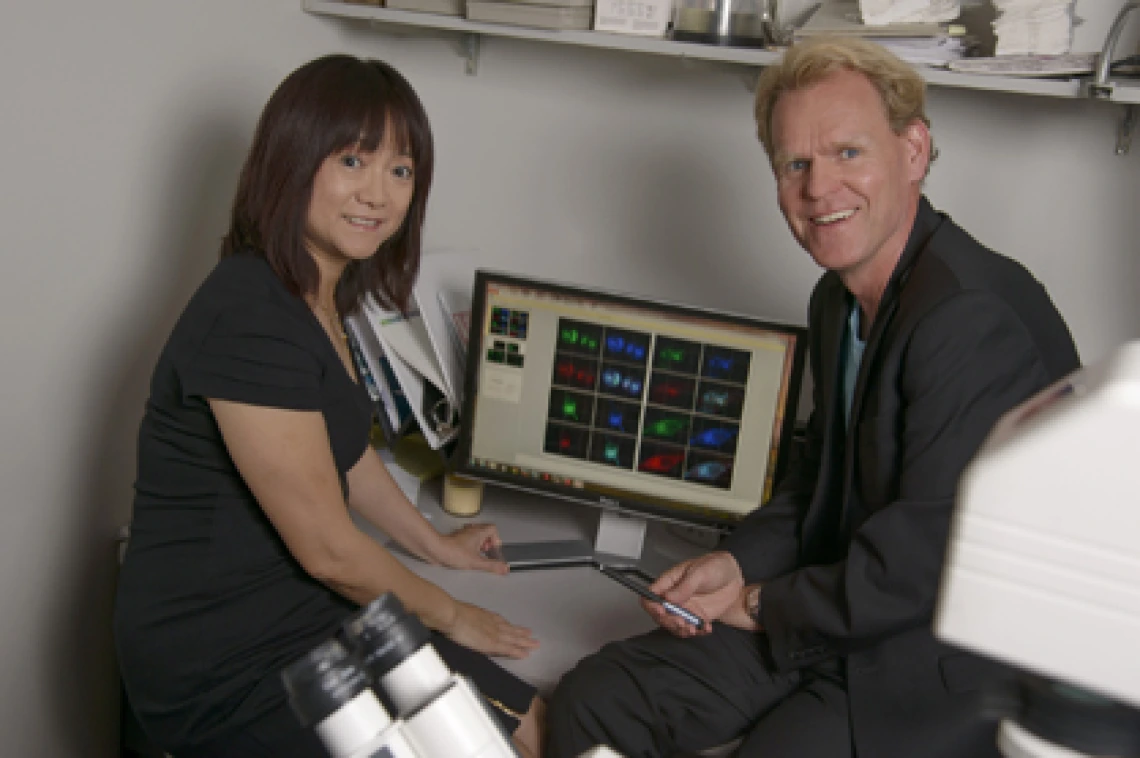COP faculty and UACC members identify food additive that may help prevent skin cancer

Georg Wondrak, associate professor, and Donna Zhang, professor, both of the Department of Pharmacology and Toxicology, and members of the University of Arizona Cancer Center, recently published a study in Free Radical Biology and Medicine titled “System Administration of the Apocarotenoid Bixin Protects Skin against Solar UV-Induced Damage through Activation of Nrf2(link is external).”
Bixin(link is external) is a bright reddish orange compound found in annatto(link is external), which is a natural condiment and food coloring derived from the seeds of the achiote(link is external) fruit. Annatto, also known as achiote, has been a common ingredient in Latin American cooking since the pre-Columbian era.
Wondrak’s lab works to find small molecules – often in edible plants – that can prevent skin cancer. Zhang’s lab investigates the activation and applications of the Nrf2 transcription factor, which strengthens cells against exposure to carcinogens. Sometimes Wondrak identifies a synthetic or natural compound that activates cellular stress response pathways including the Nrf2 pathway, and then the two work together to discover whether the compound has cancer-preventative properties. For example, earlier this year the pair published a paper about a compound in cinnamon that may prevent colorectal cancer.
In the more recent study, some mice were injected with the compound bixin – they were not fed bixin, because it is not known whether mice metabolize bixin the same way humans do. Next, mice with and without the bixin injection were exposed to UV radiation. The mice with the bixin injection turned out to experience much less severe skin sun damage than the ones without.
Bixin protects skin cells from UV damage by activating the Nrf2 cell signaling pathway, which sends a signal telling the cells to produce their own stress response factors and antioxidant defense enzymes. Many compounds are known to activate Nrf2, but this is the first time bixin has been associated with this specific pathway.
Wondrak says that this discovery is unique because bixin is a nutritional factor, not a sunscreen applied directly to the skin. It protects against UV skin damage from the inside out by causing cells to produce protective antioxidants and repair factors. The compound doesn’t kill skin cancer cells, but instead prevents their formation in the first place.
The next steps with this research will include finding out whether bixin prevents UV skin damage in humans as it does in mice. Because annatto is approved by the FDA as a safe food additive, its translational use in future clinical trials is expected to be straightforward.
Wondrak and Zhang find this research project especially compelling because it involves commonly consumed food substances.
“I found it really amazing that we would do this research with bixin on a given day, and then a couple of days later Montserrat [Rojo de la Vega, a graduate student from Mexico in the Zhang lab, in the cancer biology program] would bring a couple of achiote dishes to the lab party,” Wondrak laughs.
With continued research into the effects of bixin, scientists may soon know if foods with annatto can help prevent skin sun damage, photoaging and cancer in humans.
Research reported in this story was supported in part by the National Institutes of Health Grants 2R01ES015010, R01CA154377, R03CA167580, R21CA166926, CA023074, ES007091 and ES006694.
Story by Elizabeth Harris, communications assistant.




